Hypertrophic cardiomyopathy is the most common cause of sudden cardiac death among individuals under 40 years of age, and a cause of outflow obstruction. A systolic murmur along the left sternal border that is potentiated with maneuvers that reduce preload (e.g., Valsalva) and attenuated with maneuvers that increase afterload (e.g., squatting) is characteristic. ECG findings include left ventricular hypertrophy, T wave inversions (especially in lateral leads), and narrow, “dagger” Q waves (Figure 6.1) in the lateral leads (I, aVL, V5, V6).
Hypertrophic Cardiomyopathy
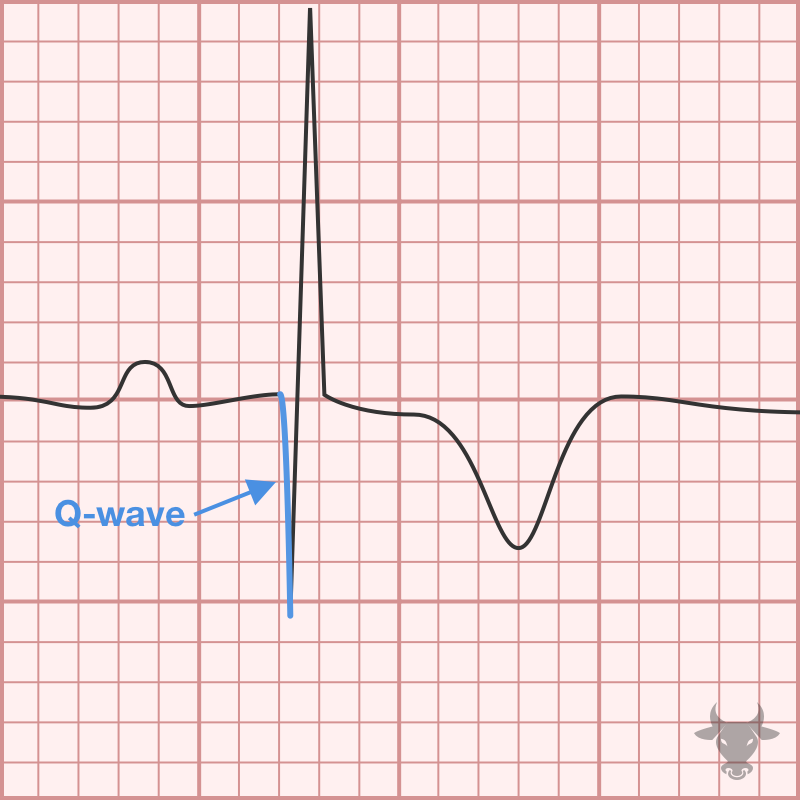
Examples
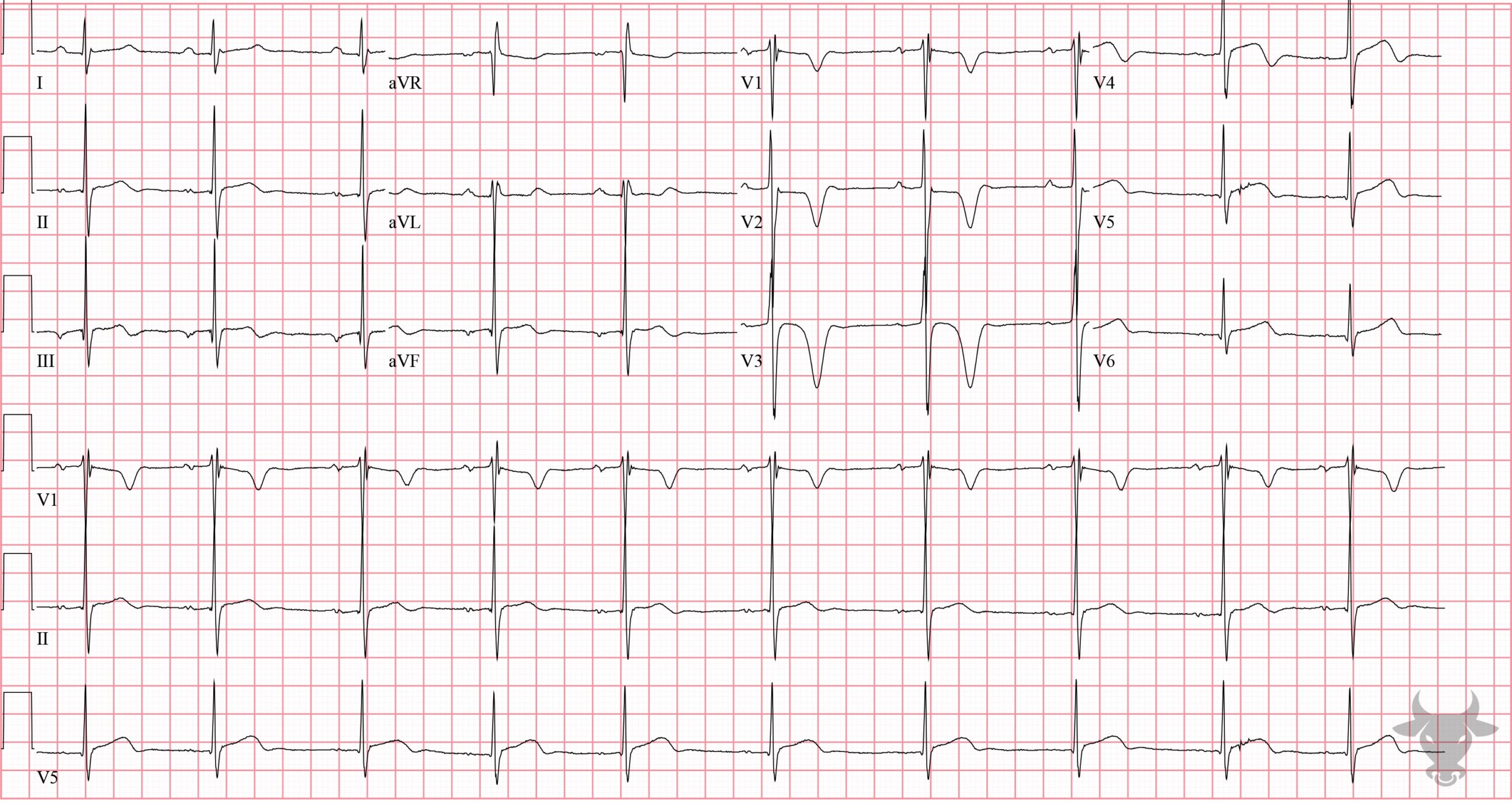
Hypertrophic Cardiomyopathy
Hypertrophic cardiomyopathy can have a variable appearance and it's not uncommon to see repolarization abnormalities like the ones seen here.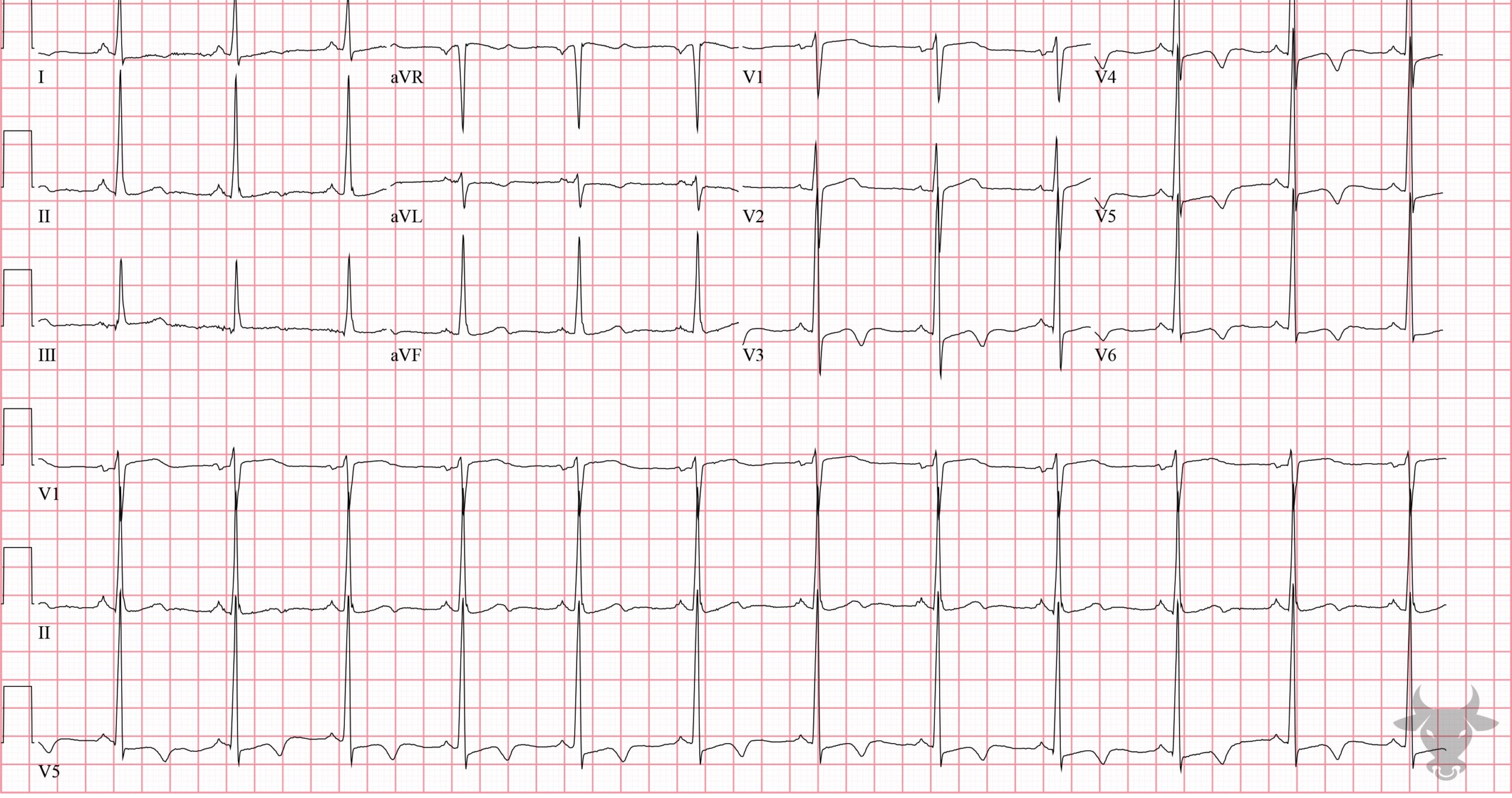
Hypertrophic Cardiomyopathy
This patient had known apical hypertrophic cardiomyopathy.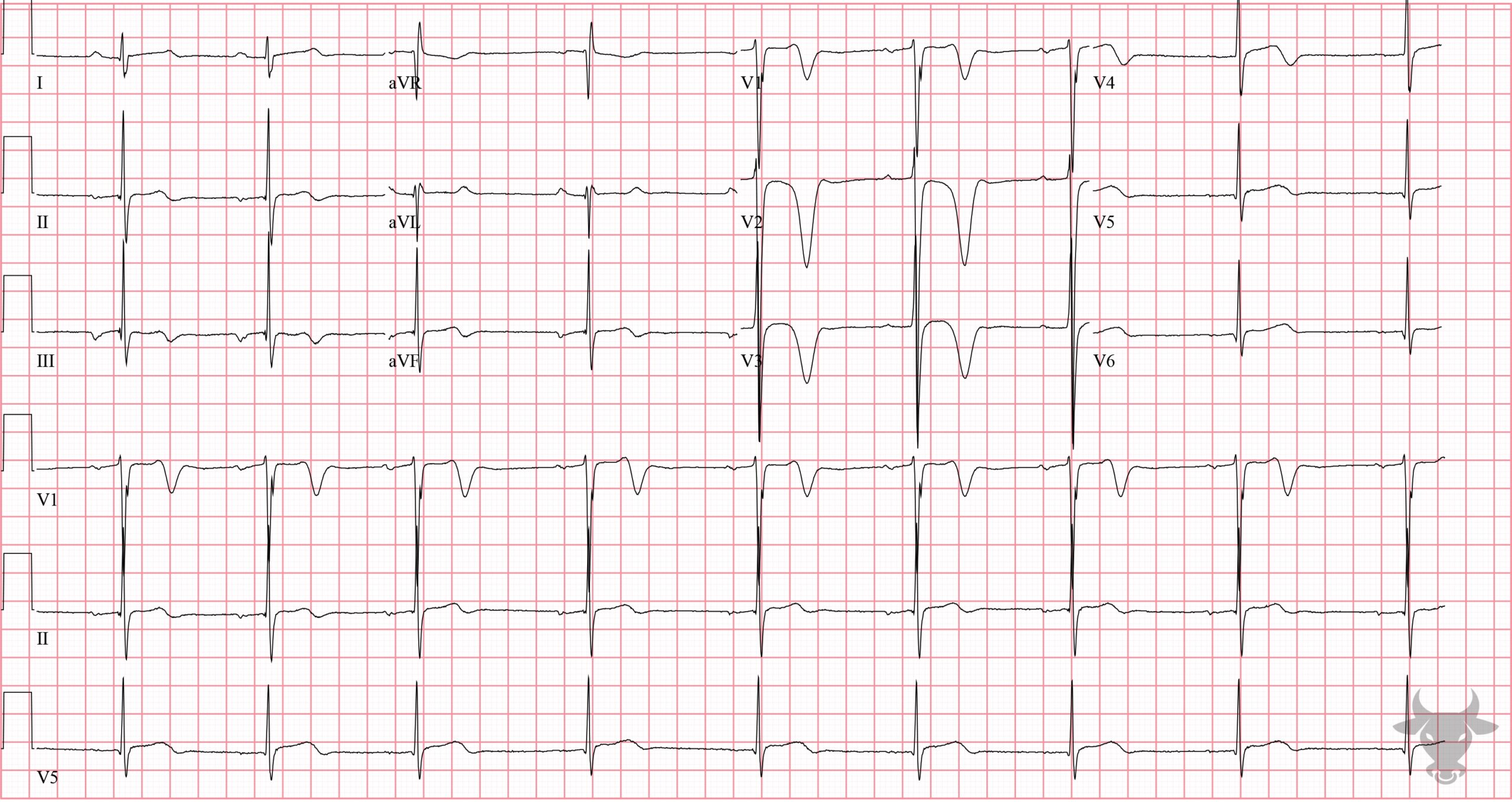
Hypertrophic Cardiomyopathy
Hypertrophic cardiomyopathy can have a variable appearance and it's not uncommon to see repolarization abnormalities like the ones seen here.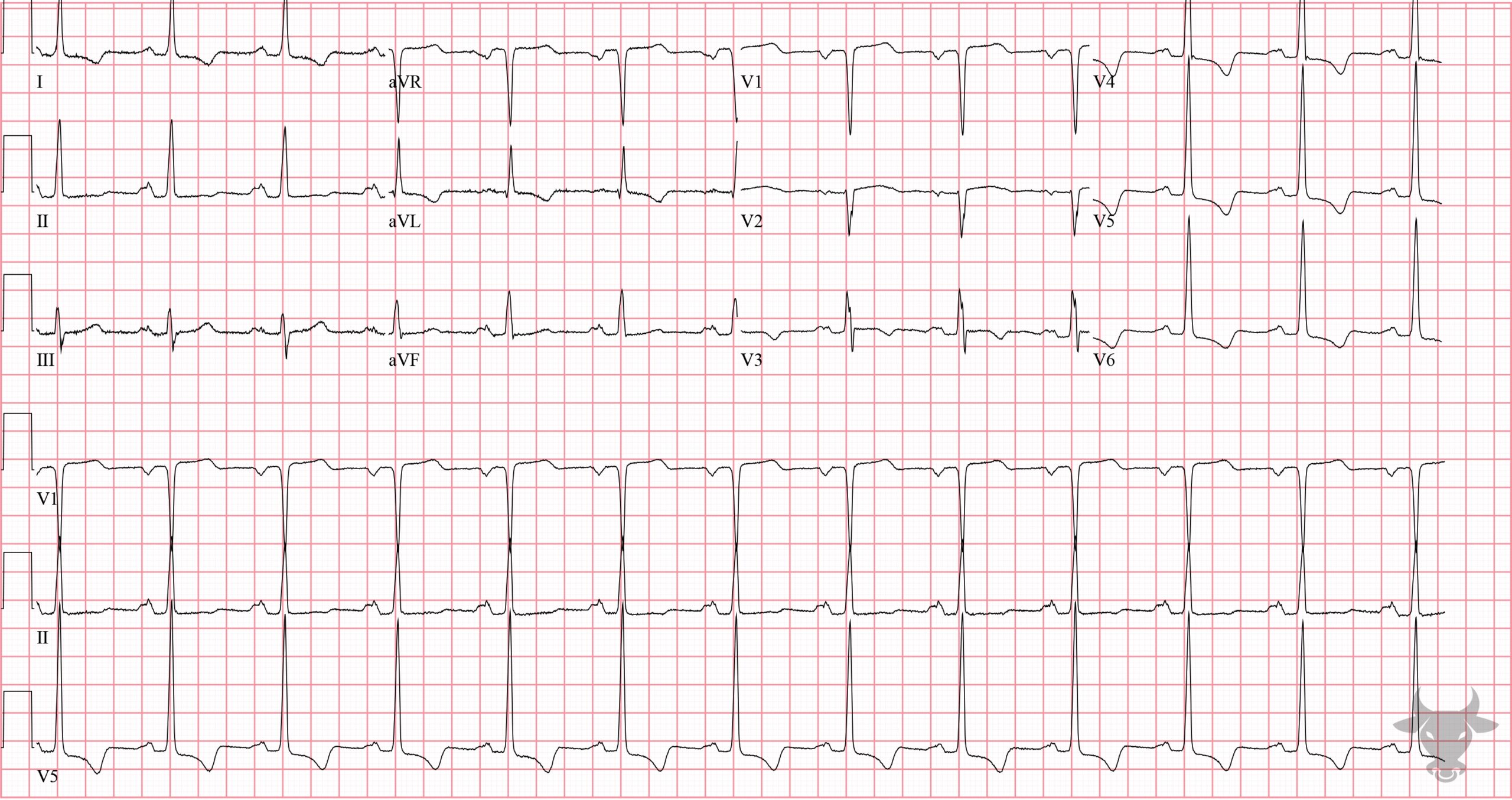
Hypertrophic Cardiomyopathy
This patient has known hypertrophic cardiomyopathy. Notice the large QRS complexes in V5 and V6 with associated repolarization abnormalities. There are also notched P waves in the inferior leads (i.e., P mitrale appearance) representing left atrial enlargement.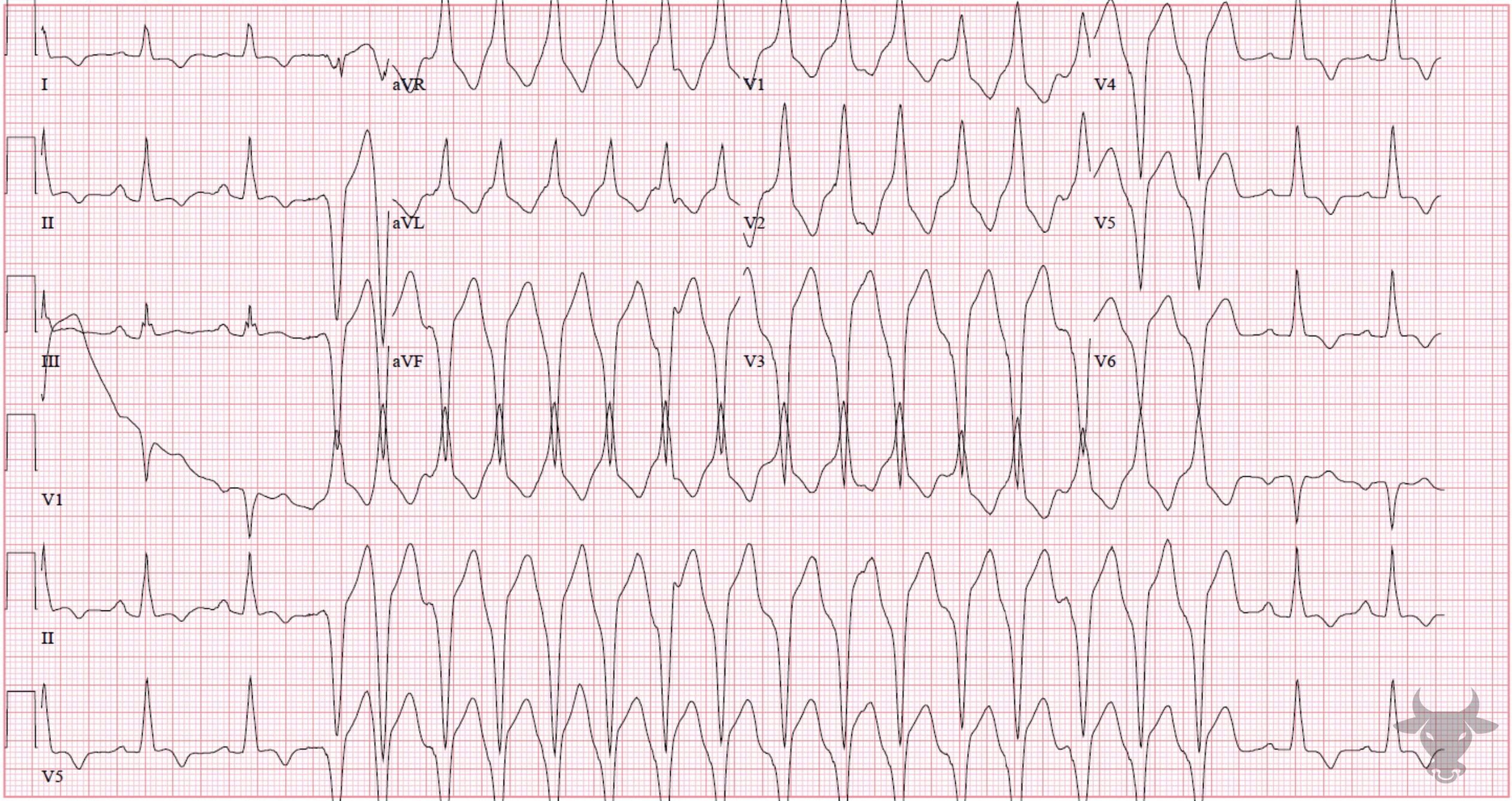
Hypertrophic Cardiomyopathy
Run of nonsustained ventricular tachycardia in a patient with known hypertrophic cardiomyopathy.References
- Wagner GS, Strauss DG. Marriott’s Practical Electrocardiography. 12th ed. Lippincott Williams & Wilkins; 2014.
- Al-Khatib SM, Stevenson WG, Ackerman MJ, et al. 2017 AHA/ACC/HRS Guideline for Management of Patients With Ventricular Arrhythmias and the Prevention of Sudden Cardiac Death. Journal of the American College of Cardiology. 2018;72(14):e91-e220.
- Gersh BJ, Maron BJ, Bonow RO, et al. 2011 ACCF/AHA guideline for the diagnosis and treatment of hypertrophic cardiomyopathy: A report of the American College of Cardiology Foundation/American Heart Association Task Force on Practice Guidelines Developed in Collaboration with the American Ass. Journal of the American College of Cardiology. 2011;58(25):e212-e260.
